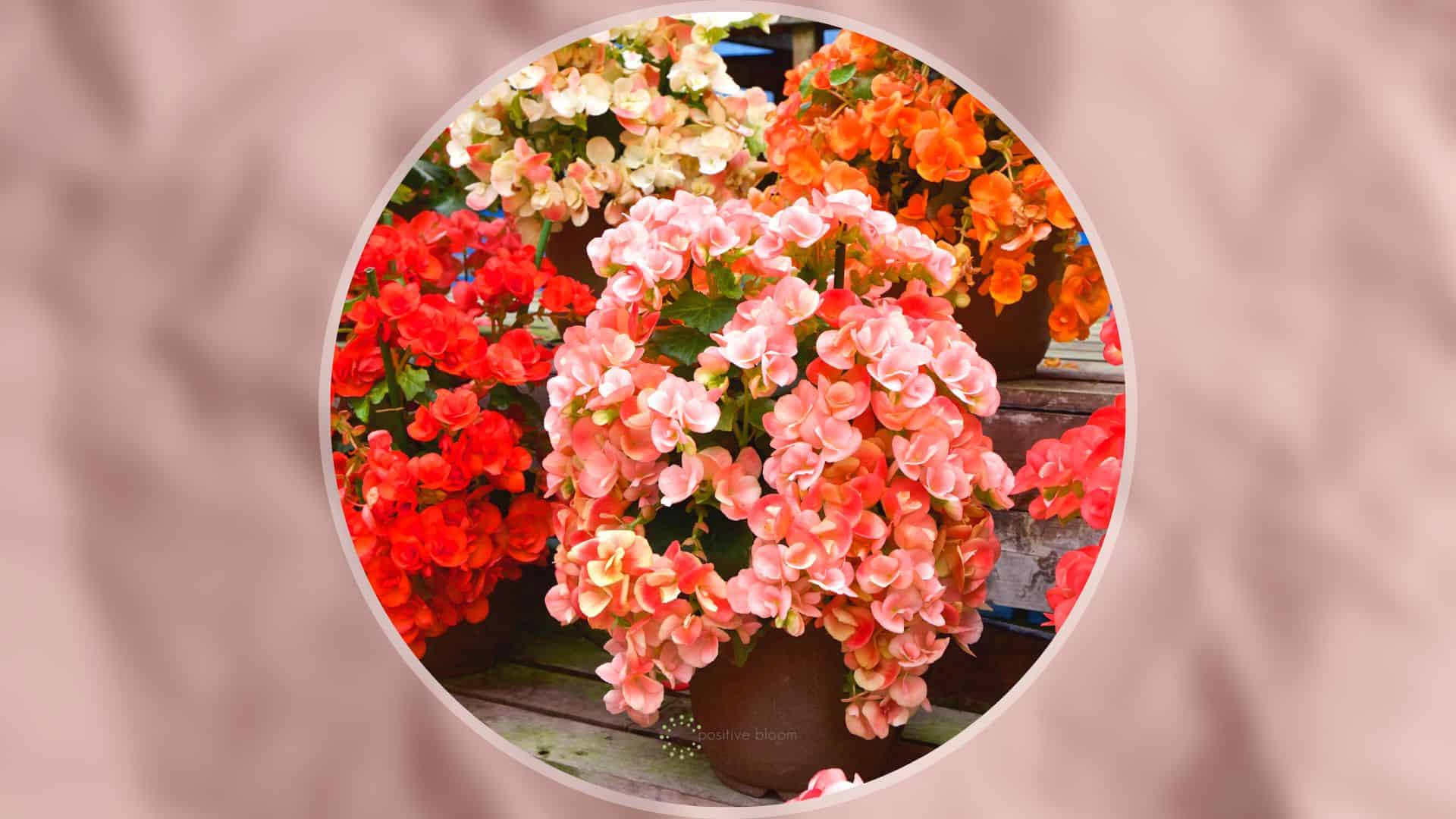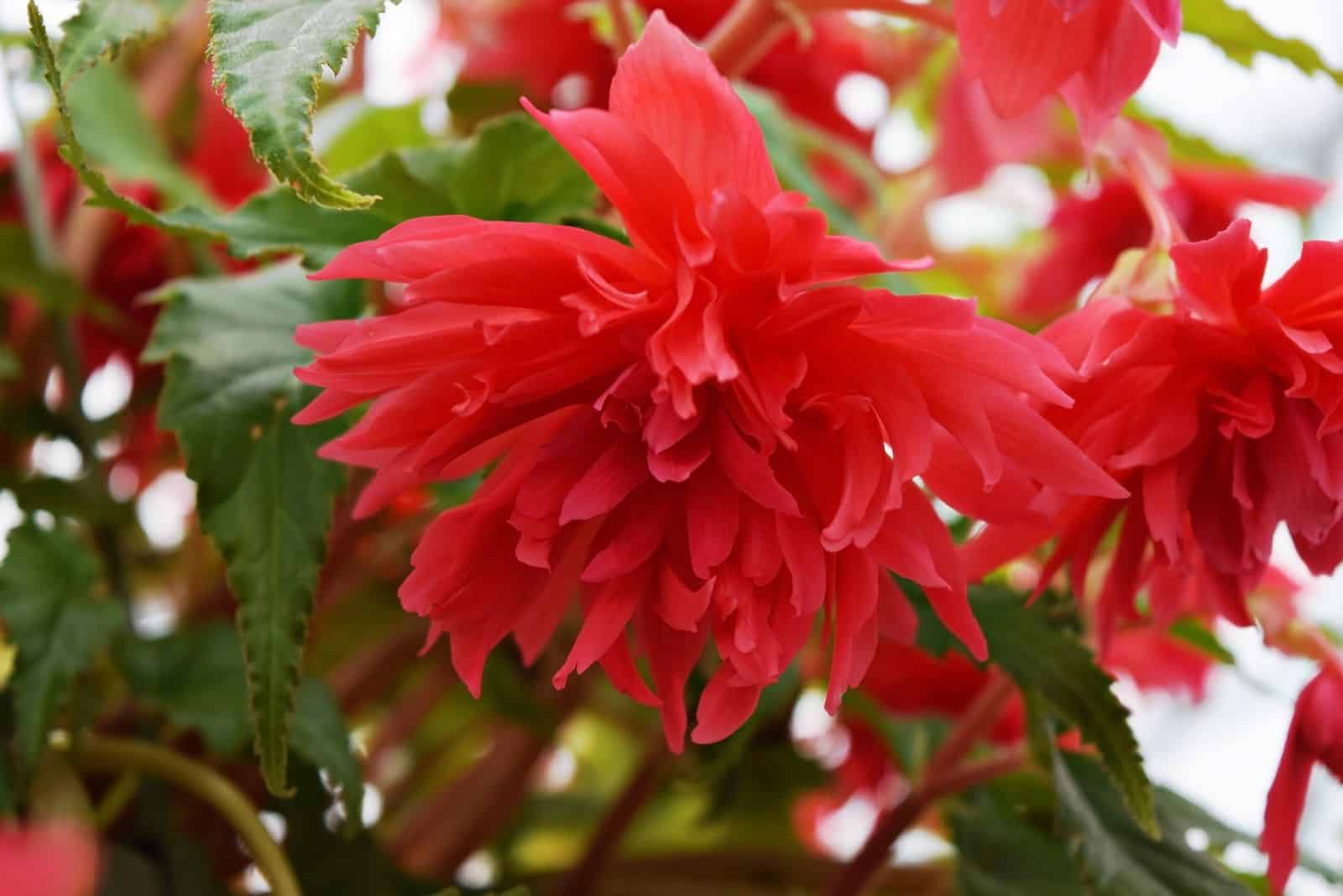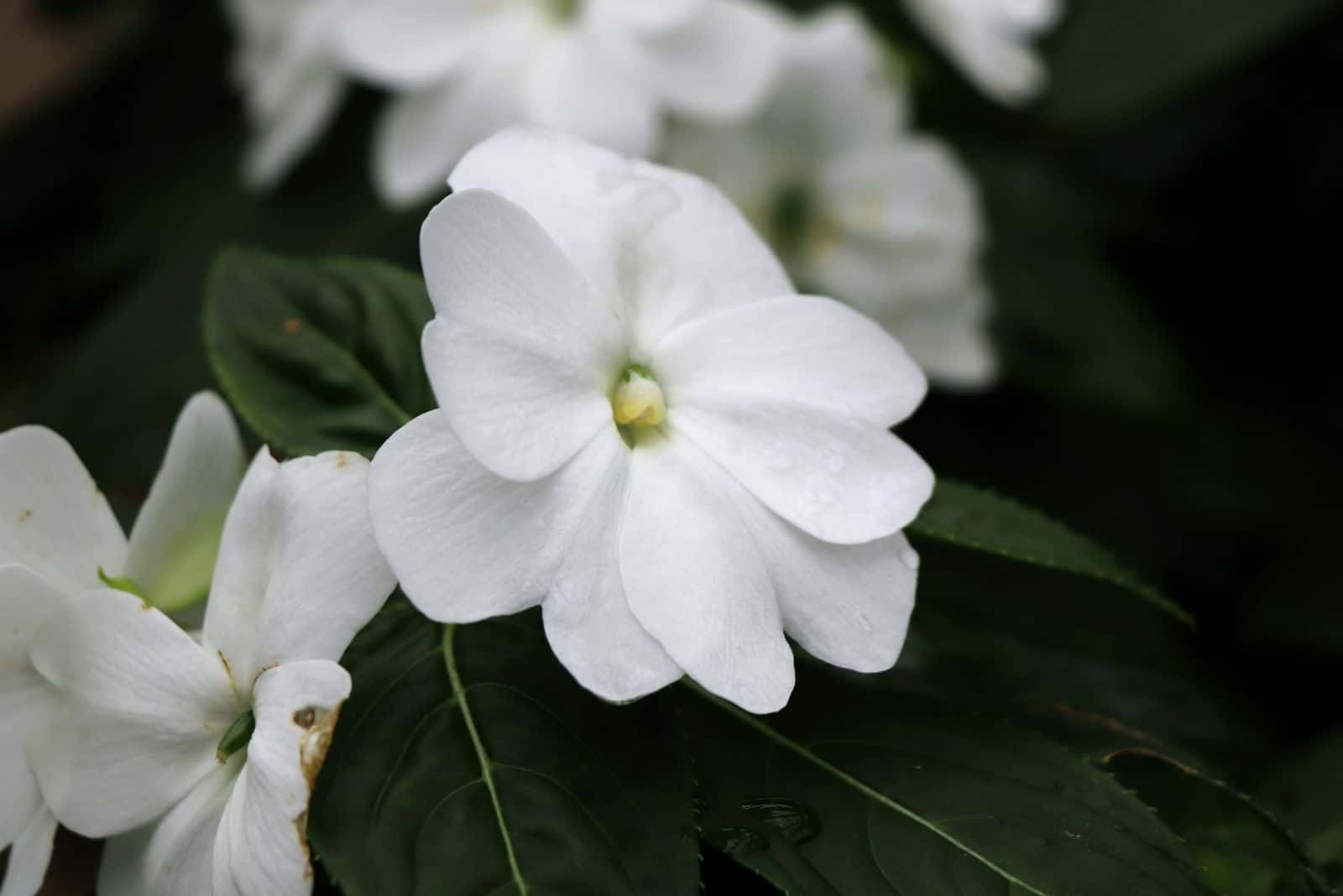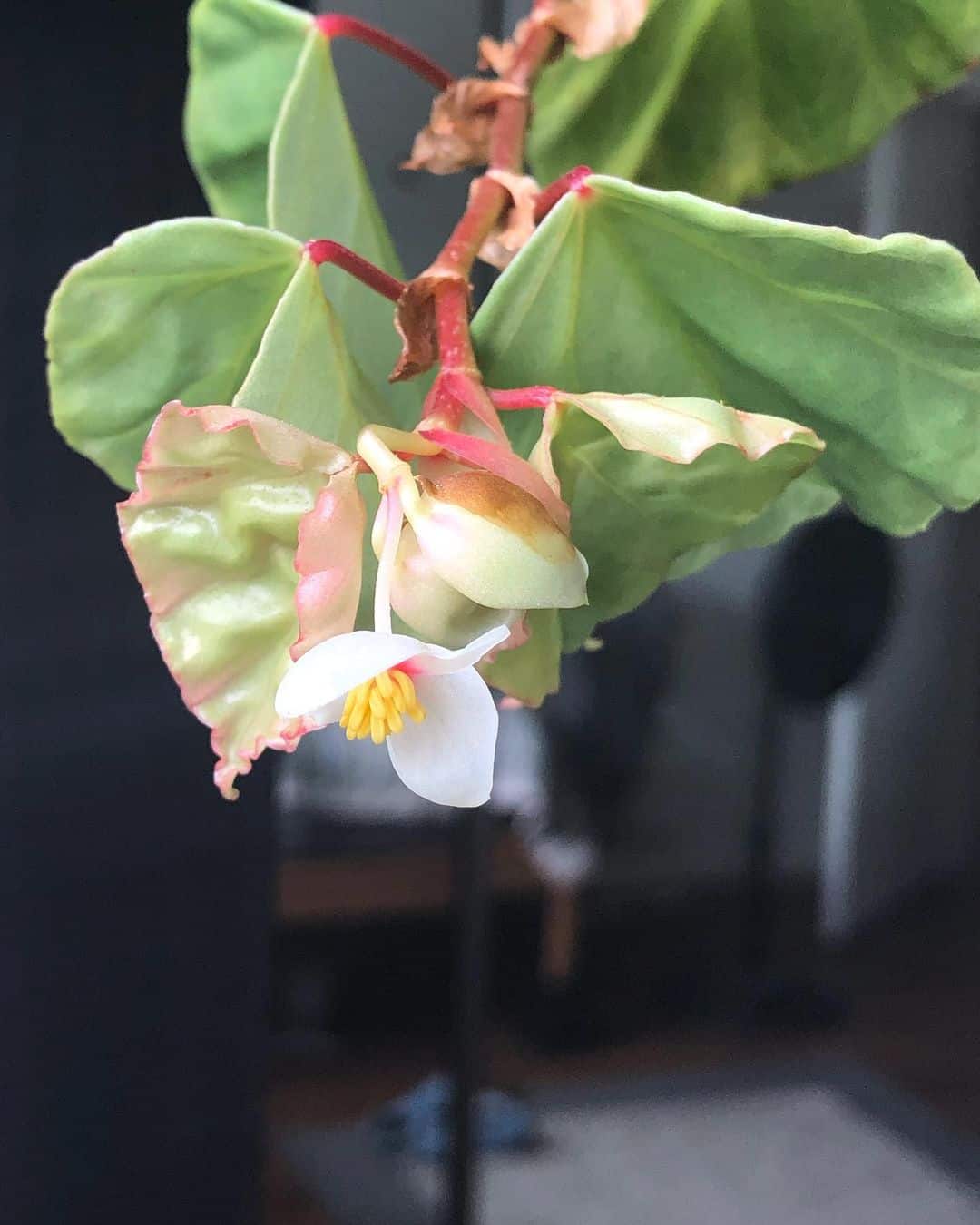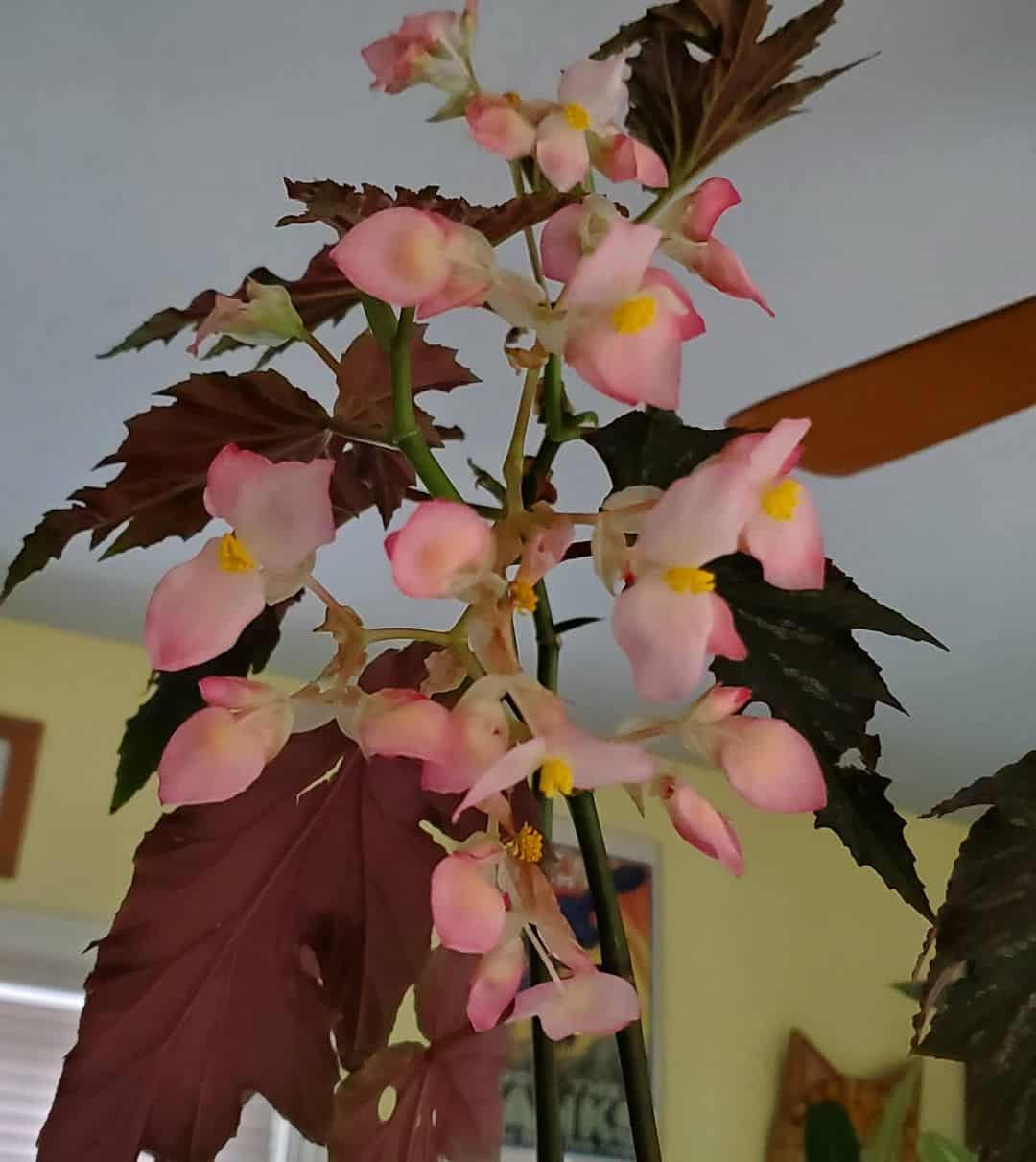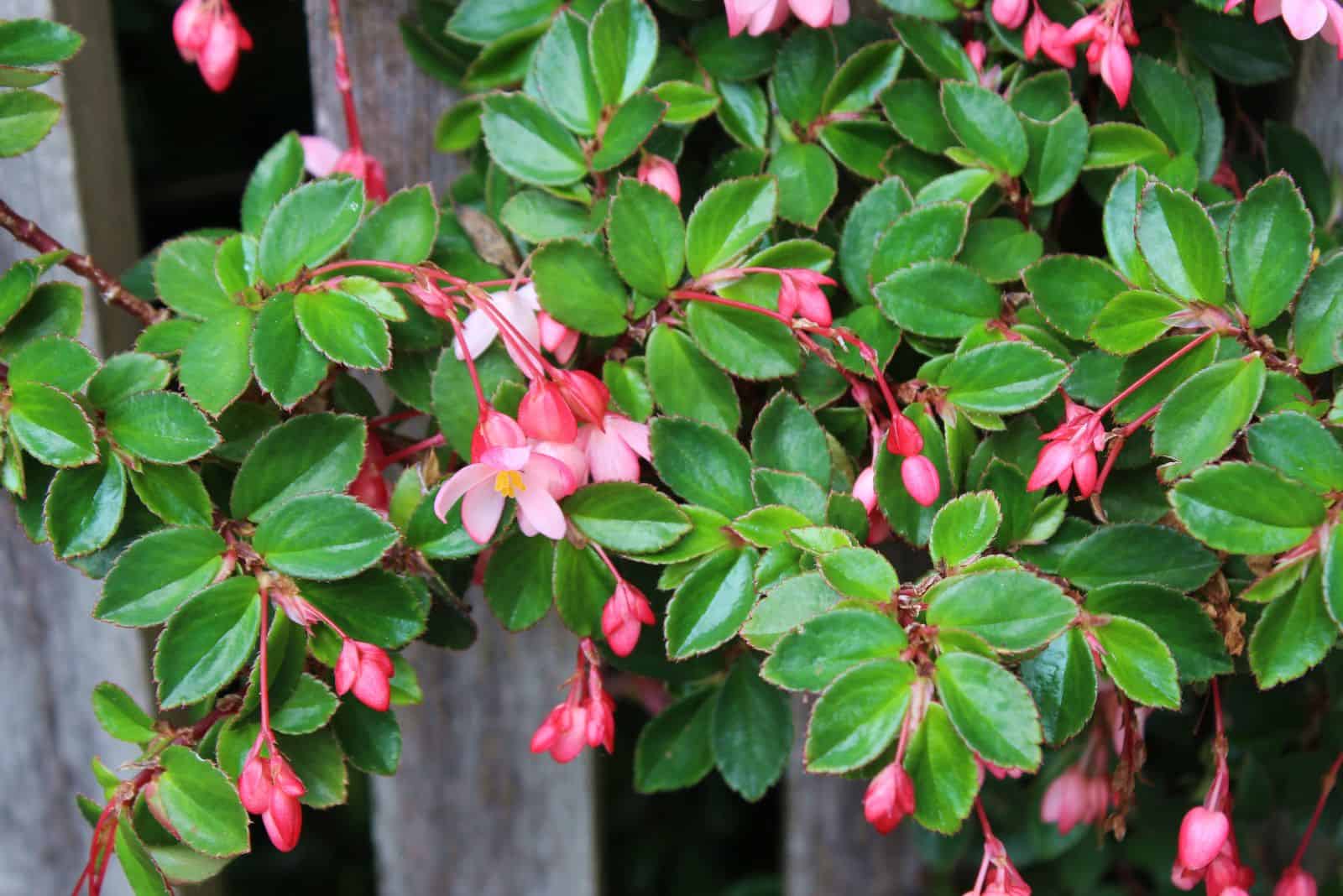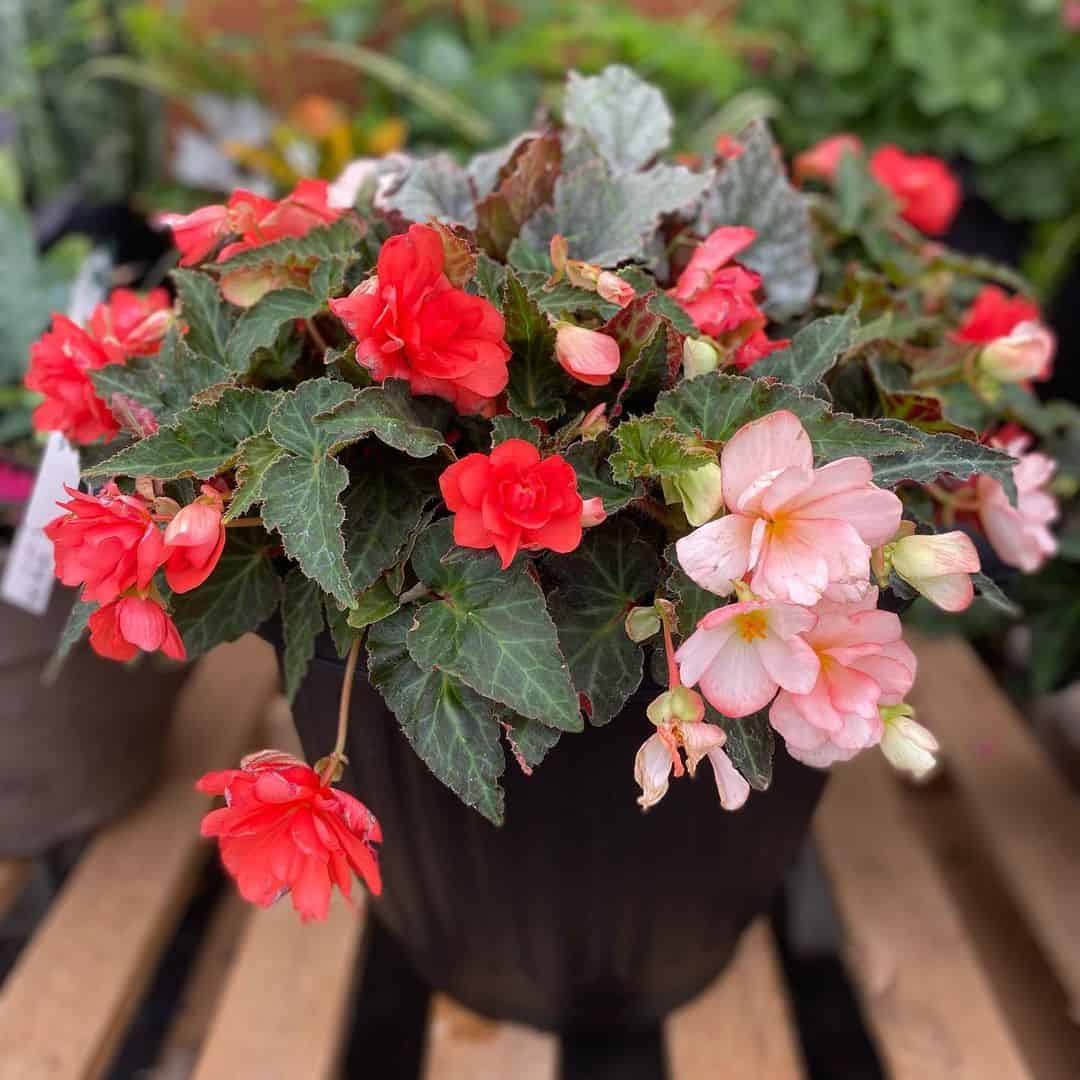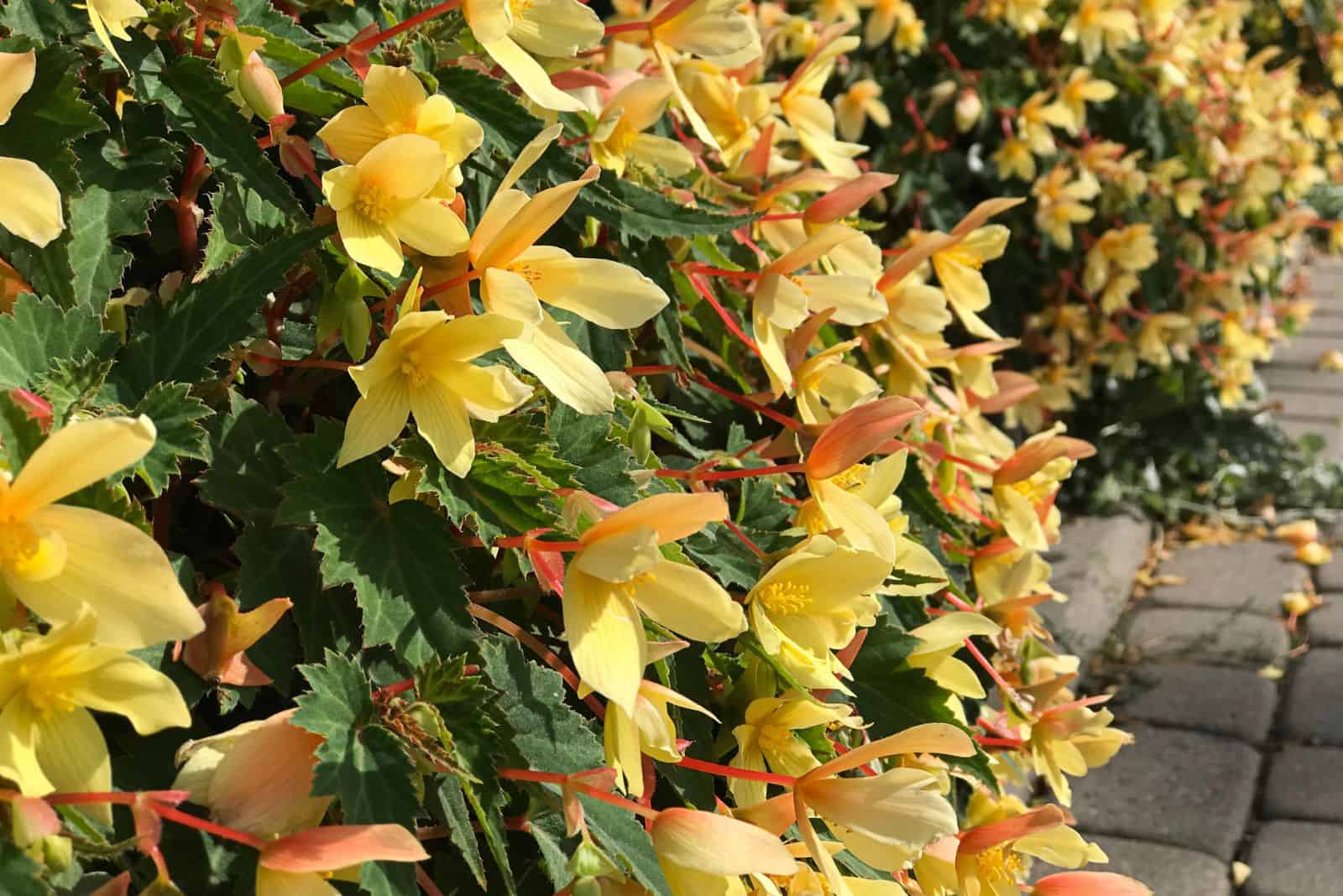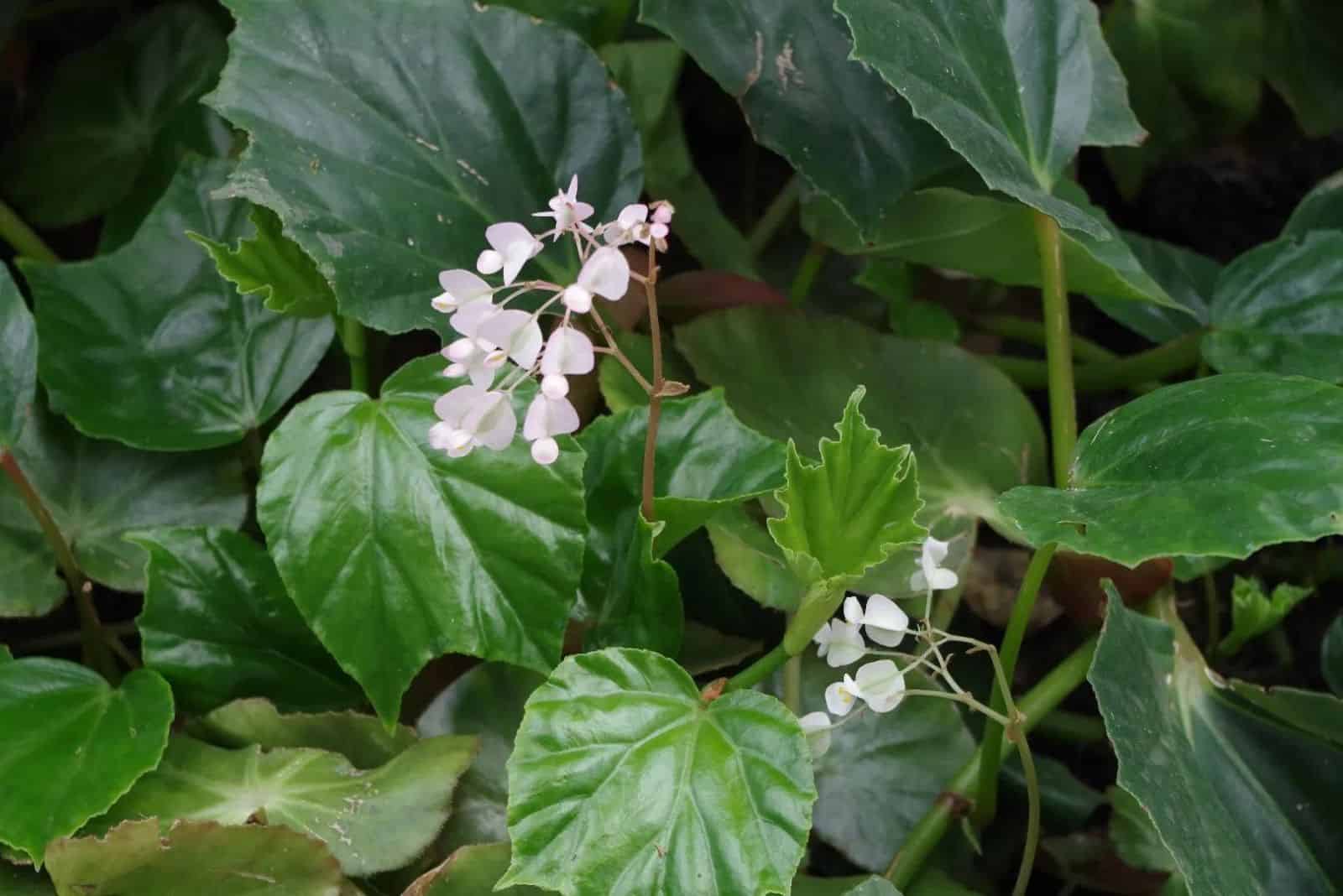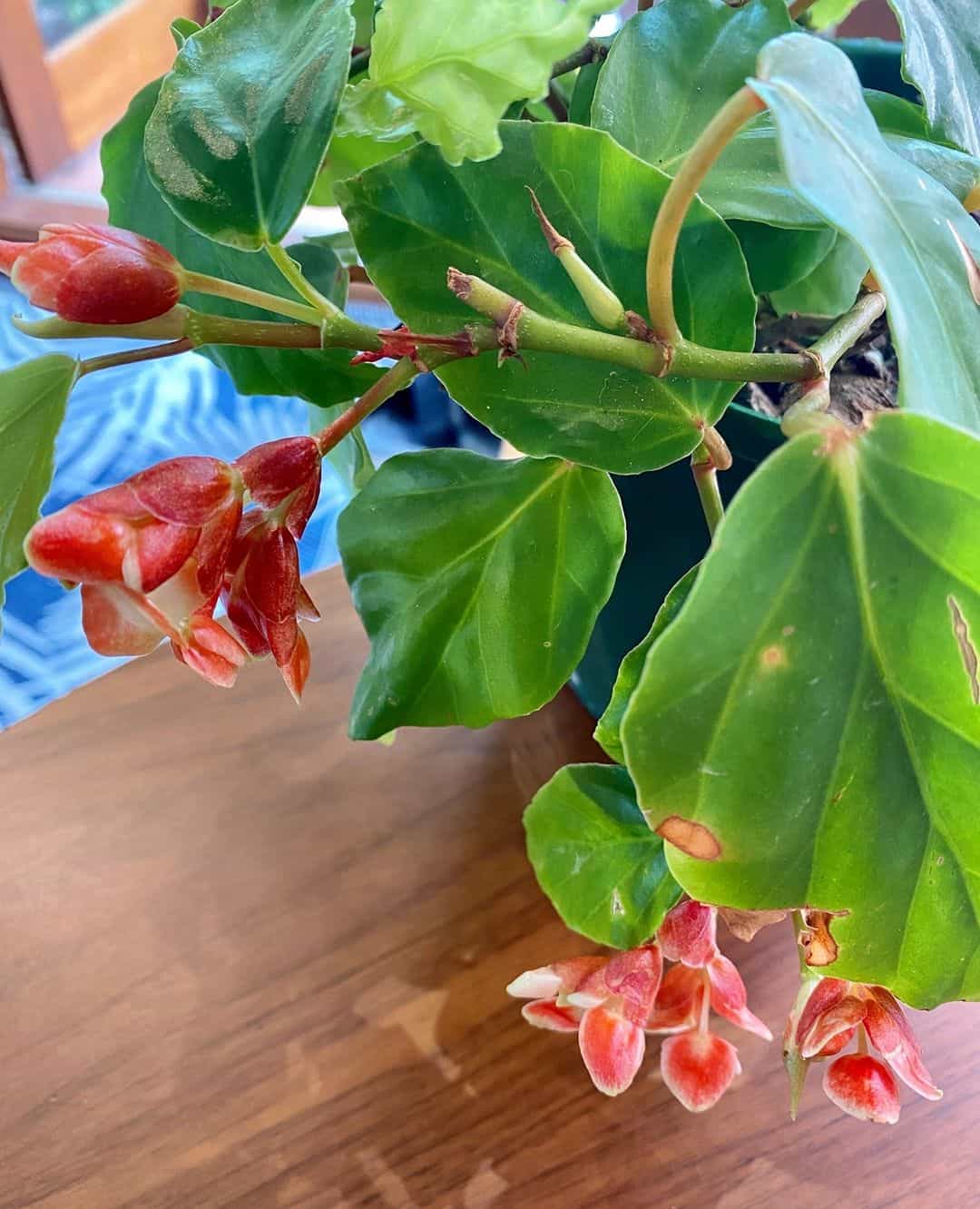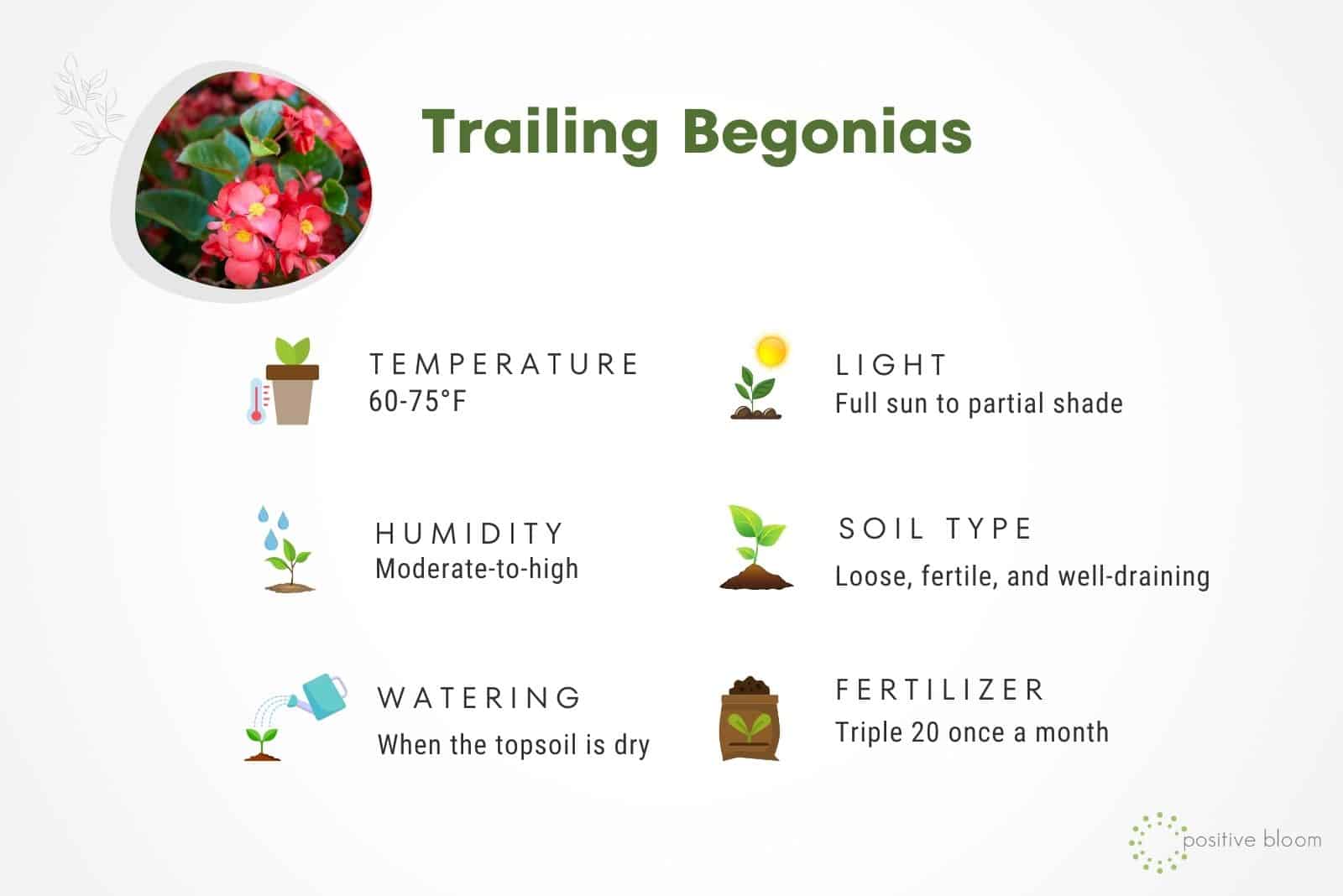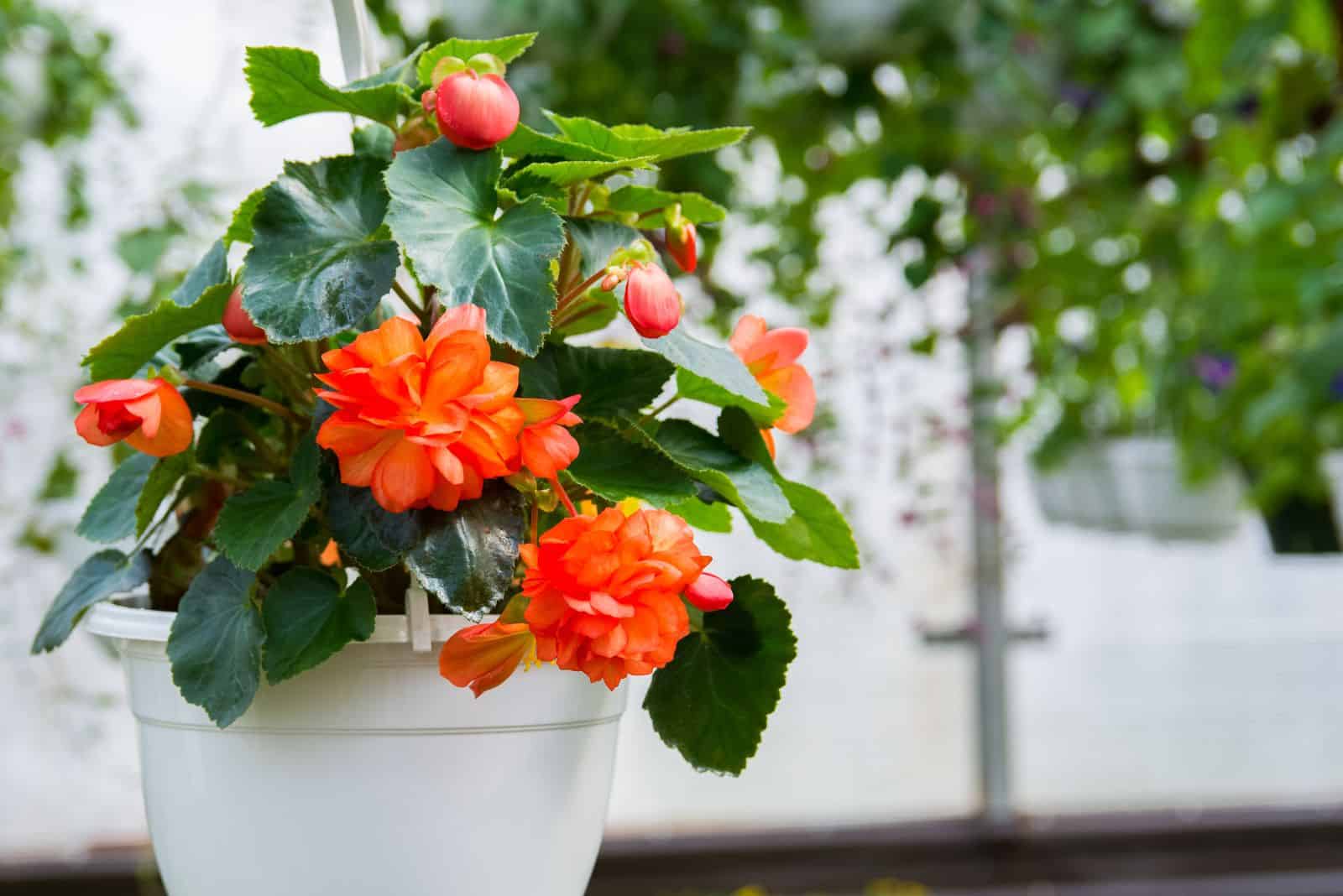There are many summer-blooming plants we can decorate our gardens with, such as lavender, geraniums, phlox, and even begonias.
There are over 2000 varieties of plants that belong to the Begonia genus, and today we’re going to talk about trailing begonias. This species looks amazing cascading down window boxes and hanging baskets or crawling underneath trees.
They bring liveliness to our yards whether we have them in red, pink, or white shades, for indoors and outdoors, etc.
In the following article, you’ll discover nine amazing trailing begonia types and can read more about how to nurture them to get the most blooms.
Let’s get started!
9 Trailing Begonias
There are many begonia types, the Begonia maculata, for example, but not all of them are trailing.
Below, you can find nine beautiful hanging varieties that look simply amazing in planters hanging from your balcony or planted in the ground.
1. Begonia ‘Funky Pink’
This climbing begonia has pink flowers of an unusual shape, so we usually refer to them as “double flowers”.
Use it to add a splash of color to your garden, or to add more texture to the design.
This particular species is a hybrid that usually reaches a height of one foot and spreads 1.5 feet.
2. Begonia ‘Pendula White’
The white flowers of this species look amazing in pots spread around your patio or cascading down from hanging baskets.
The blossoms are large, and the plant will produce ample blooms even in lower light conditions, which makes it suitable for various locations.
It can grow up to a foot tall and 1.5 feet wide, and will flower profusely throughout summer and fall.
3. Brazilian Heart Begonia
This hanging begonia is famous for its white flowers that appear in winter and have a delightful scent.
Its dark green, heart-shaped foliage offers a perfect contrast to the snowy flowers, while its trailing habit makes it perfect for wooden boxes, hanging baskets, or large patio pots.
4. Brazilian Lady Begonia
Begonias are on the list of acid-loving plants, and trailing varieties such as the Brazilian Lady can decorate your garden perfectly whether planted in the ground or in a container.
We prefer growing them in hanging baskets where their trailing habit, dark green foliage, and tiny white blossoms provide the best natural frame for patios.
5. Dragon Wing Begonias
Dragon wing begonias are famous for their deep red color and can blend into any landscape, whether to add dash of color or accentuate a certain feature.
This hybrid is a passionate grower, tolerates summer heat quite well, and produces ample beautiful blossoms throughout its growing season.
6. I’conia Begonias
The various cultivars of I’conia begonias make this species perfect for everyone, whether you want a splash of fiery orange here, deep red there, or some light pink to brighten up your white garden.
Their large and showy flowers look amazing in baskets with earth tones (especially the yellow cultivars).
7. Mistral Begonias
This species has various cultivars that come in many different shades, including pink, deep and orange red, yellow, and orange.
They are semi-trailing varieties that require no deadheading, which makes them a perfect choice for a beginner who wants to add some color to hanging baskets or crawling in their yard.
8. Morning Glory Begonia
The trailing morning glory begonia is native to Brazil and, as such, it cannot tolerate frost, so you should be prepared to move it indoors (or grow it there full time) before winter comes knocking at your door.
It has a simple look, and its dark green foliage reveals tiny clusters of white flowers in spring (or even late winter).
9. Shrimp Begonia
This award-winning begonia species is truly one of a kind, with its unique-looking orange-red flowers that appear in late winter or spring.
And even though we can enjoy their flowers for only a season, its heart-shaped and glossy leaves are there all year round.
(Once we heard that the blue-green foliage has purple dots underneath and white ones on the upper side, we knew we had to have it!)
Plant Care Guide For Trailing Begonias
To keep your begonias blooming, you need to ensure they get plenty of light, water, and fertilizer throughout their growing season. Keep them in a warm location, deadhead the spent flowers, and plant them in a well-draining potting soil.
Check out the main requirements of these plants here, which we’ll talk about more in the following paragraphs:
Light Requirements
These begonias typically do well in full sun to partial shade conditions, although that mostly depends on your climate.
Generally speaking, you should place them somewhere they can get direct light in the morning or afternoon, and shade during the hottest time of the day.
Indoors, that’s usually east- or south-facing windows, and if you have balconies looking in either direction, you can hang a wooden box or a hanging basket there as well.
Finally, these plants need plenty of sunlight in order to produce ample blossoms, but don’t expose them to harsh midday direct sunlight since that can burn their delicate leaves.
Water And Humidity
Since we usually grow hanging begonias in hanging baskets and patio pots, it is very easy to know when to water them.
Irrigate them whenever the top portion of the growing medium is dry, which may be twice a week or even more frequently depending on the density of the soil, the temperatures, and the amount of sunlight it gets.
Rainwater is good for plants, but if you can’t practically store it, you can also use distilled water or even tap water; however, you should pour it into a watering can and leave it for about 24 hours before using it so that the chlorine has time to evaporate.
Humidity
These plants typically require higher humidity levels, but it all depends on the species in question. For instance, certain begonias require air moisture levels between 70-90%, while others can thrive in humidity of around 40%.
Therefore, always check your species and its specific needs before raising humidity.
If your plant requires high air moisture levels, you should invest in a humidifier since it is the best way to ensure your plant is happy with its surroundings.
(If you live in Florida or some other humid state, you don’t have to worry about this.)
Temperature
The rule of thumb is to keep your begonias in temperatures between 60 and 75 degrees Fahrenheit, although some hybrids may be more heat and cold-tolerant.
Generally speaking, you shouldn’t expose these plants to temperatures lower than 55 degrees since that can stress them out too much and affect blooming.
You should also keep them in a location sheltered from the wind (if you keep them outdoors), and away from heaters, air conditioners, old and cracked windows, and similar drafty areas.
These locations typically have lower humidity and experience sudden temperature fluctuations that can affect your plants negatively. (Constant cooling and warming up prevents the plant from entering true dormancy and rest, can damage the roots, etc.)
Soil And Fertilizer
Trailing begonias prefer loose, fertile, and well-draining growing mediums in order to thrive and avoid waterlogging.
You can get such mixes in garden centers, or you can amend your garden soil with some compost, perlite, and similar materials that support drainage.
You can also combine equal parts potting soil, perlite, and coco coir (or peat moss if you prefer). And if the substrate you chose as a base doesn’t contain any added fertilizer, you can add some worm castings.
Another recipe we love is using loam-based compost and mixing it with pumice (or perlite) and horticultural sand to ensure proper amount of nutrients and drainage.
Fertilizer
Begonias require plenty of nutrients for healthy development, so make sure you plant them in a fertile growing medium and feed them once a month with a liquid fertilizer such as triple 20 starting in early spring.
Dilute the plant food in water and follow the instructions.
If you have in-ground begonias, you can use slow-release fertilizers to ensure a steady supply of minerals throughout the year.
And if you want to entice your plant to produce blossoms, you can switch to a phosphorus rich fertilizer, such as 15-30-15, just before it starts blooming and continue to apply it until the flowering ends.
Don’t feed begonias in winter since they cannot use the additional nutrients and will only end up with root burn.
Repotting
Begonias don’t hate being root bound, although you shouldn’t keep them in such a state for too long as it can stunt their growth and affect moisture and nutrient uptake.
Once you notice that the roots are coming out of the drainage holes, your plant growing slowly (and it was thriving up until a certain moment), or the growing medium drains too fast, you should move your plant to a larger container.
When repotting, the first thing you need to do is loosen the soil and separate the plant’s roots if they’re too bound.
Then, place some potting substrate in the bottom of the planter, put your begonia in it, and backfill with more potting mix.
Water your plant deeply until you notice excess coming out of the potholes, and then take it to its usual location.
The best repotting time is during the plant’s growing season, but if you notice any of the symptoms we mentioned above at the beginning of the winter, don’t hesitate to transplant your begonia.
It will take being crammed into a tiny pot much harder than being repotted, so don’t shun it just because it’s not the best time to do it!
Pruning
Pruning begonias has many benefits, from keeping your plants happy to supporting their bushy growth.
To make this plant lusher, you should snip the tips once they reach a size of 3-6 inches. Then, repeat this every month until the middle of the summer.
And if you want larger blossoms, you’ll have to sacrifice the quantity so that the plant can direct more energy into producing showy blossoms.
Remove the new vegetative growth while leaving one flower bud per stem.
Finally, deadheading begonias is also important since it can prevent the development of diseases on rotting flowers and will keep your plant nice and neat.
Propagation
One of the things we love most about trailing begonias is that they can be propagated by stem cuttings, and that’s what we’ll talk about in the following section.
Step 1. First take a healthy cutting you wish to propagate. Ensure it has around 3-4 nodes so that it can root quickly and produce new leaves.
Step 2. Remove the leaves (and a flower if there is one) and dip the cutting in a rooting hormone.
Step 3. Fill a nursery pot (or tray if you wish to multiply more plants) with a well-draining potting mix and plant your begonia cutting in it.
* We prefer watering the growing medium before planting the cuttings, but you can do it afterwards as well. Just make sure the blend is moist all the way through.
Step 4. Cover the cuttings with a plastic bag or a humidity dome to increase the humidity and promote root development.
Step 5. Place the tray in a warm and bright location, mist it occasionally to prevent the soil from drying out, and that’s it!
The cuttings should develop their root systems in about four weeks, and you can transplant them into larger containers once you notice roots peeking from the drainage holes.
Here’s how the pros do it:
Common Issues With Trailing Begonias
These flowering plants aren’t that susceptible to pest and disease attacks, but you must meet their requirements (especially those concerning water) to prevent common issues.
You’ll almost certainly have to deal with certain problems eventually, and that’s why we described how to treat infestations and infections if it ever comes to that.
Pests
The most common pests that attack trailing begonias are mealybugs, scales, aphids, spider mites, thrips, etc.
We’ve heard that insecticidal soaps aren’t the best choice for begonias as they can burn their foliage.
Therefore, you can use diatomaceous earth and castile soap if bugs start bothering your begonias, as these organic pesticides are quite safe for them.
And don’t be afraid to use pest control during blooming; the flowers will remain intact.
Diseases
Common diseases that afflict trailing begonias are powdery mildew and root rot, both of which are caused by too much moisture.
Powdery Mildew
Powdery mildew occurs as a result of frequently wet leaves, lack of air circulation, and warm temperatures.
It manifests as a powdery residue on the begonia’s leaves, and although it’s not deadly, it can hinder photosynthesis.
Therefore, you should apply protectant fungicides such as Chlorothalonil or baking soda solution before or immediately after you notice the symptoms. You can also use potassium bicarbonate to kill the fungi in an instant.
You can prevent powdery mildew by increasing air circulation, pruning your plants more in humid areas, and by watering your plants at the base and trying not to splash moisture on its foliage.
Root Rot
Root rot occurs as a result of overwatering, and the common symptoms include yellowing of the foliage, droopiness, stunted growth, softening of the stems (in the worst case scenario), and a foul odor spreading from the container.
The only way to treat this fungal disease is to remove the infected roots (they’re usually dark and soft), and spray the healthy ones with a fungicide to prevent the return of the disease.
Afterwards, pot your begonia in a fresh growing substrate and clean container, and irrigate it only once the top part of the mix is dry.
Final Thoughts
There are many varieties of trailing begonias out there, and we included nine that are famous for their showy flowers or glossy foliage.
You can use them to decorate your pool area, patios, and balconies, or keep them indoors for a unique display.
These plants have a couple of requirements you should meet, such as growing them in a sunny location and fertile and well-draining medium, maintaining equally moist soil, and keeping them in warm temperatures.
And if you want abundant blooming, you should fertilize them during their growing season, prune and deadhead them to keep them clean and healthy, and repot them once their roots poke through the potholes.
Begonias are fairly resistant to pests, but they can still get attacked by aphids and similar creatures, so keep some organic pesticides at hand to keep them healthy.
Finally, powdery mildew and root rot can afflict these plants, which is why you should ensure proper air circulation and dry leaves, and water them only when the top portion of their growing substrate is dry.
Enjoy your beautiful display of these flowers, and until next time!

